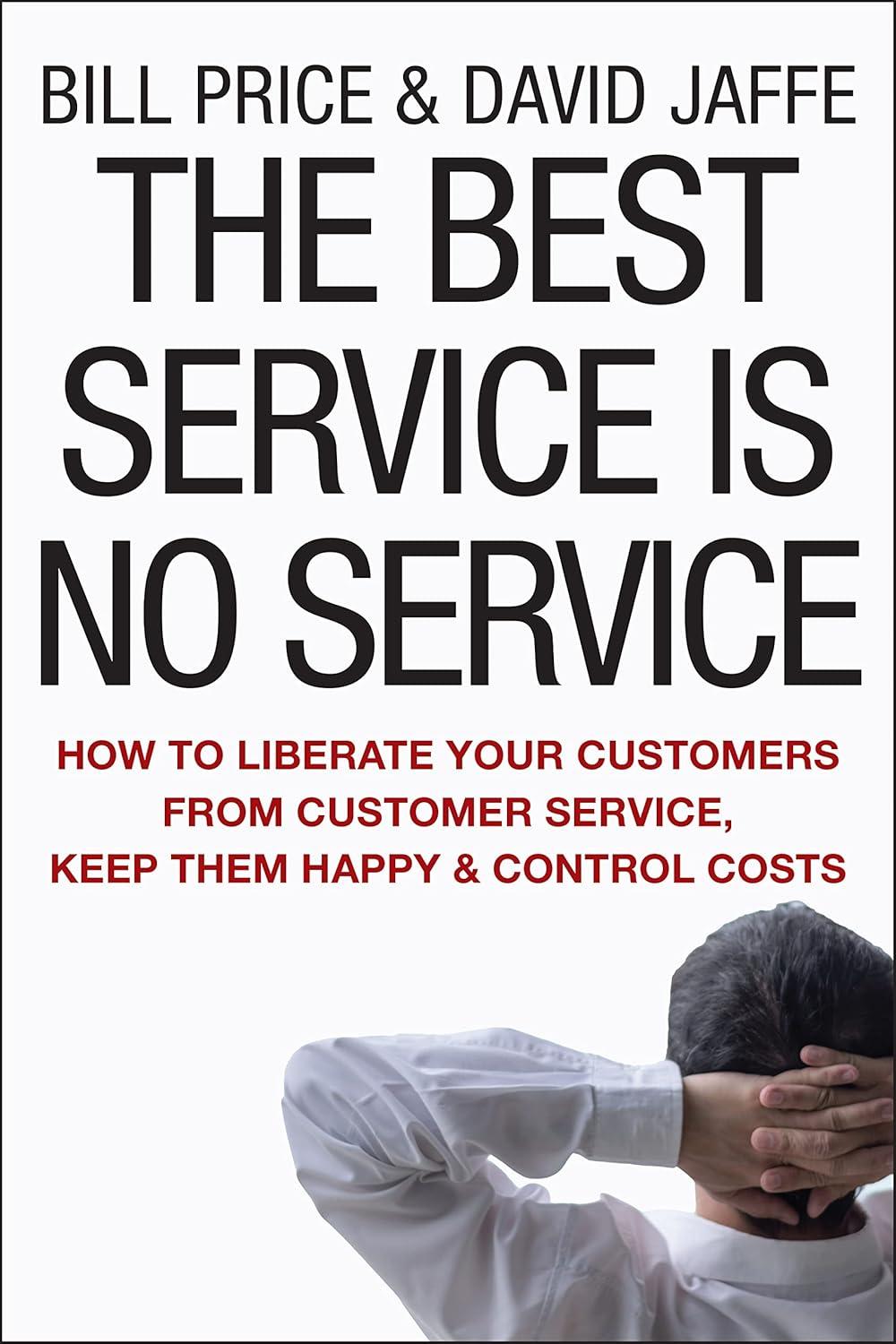We Begin with a Vision of effortless customer Relationship

I found "Teh Best Service is No Service" to be a transformative read that completely shifted my perspective on customer support. The authors argue that excellent service isn't about being available 24/7 but about eliminating the need for service in the first place. By viewing support as a data point for dysfunction, companies can proactively fix problems before they arise. The book outlines practical principles like eliminating needless contacts, creating engaging self-service options, and being genuinely proactive in meeting customer needs. Implementing these strategies not only delights customers but also substantially reduces operational costs.
Highlighting the seven core principles, the approach is straightforward yet impactful. Such as, eliminating dumb contacts means designing products and processes that minimize the need for intervention. Creating engaging self-service ensures customers can find solutions independently, reducing frustration. The emphasis on owning actions across the company and listening and acting on feedback creates a culture of accountability. While the concepts require a shift in mindset, the results—higher customer satisfaction and lower costs—are well worth the effort.
Here’s a rapid summary of the key features, pros, and cons:
| Key Features | Pros | Cons |
|---|---|---|
| Seven actionable principles |
|
|
If you're ready to revolutionize your approach to customer service, check out this game-changing book.
We Explore the Core Principles Behind Liberating Customers

I've found this insightful book to completely shift my perspective on customer service.The authors argue that the best way to satisfy customers is to eliminate the need for service altogether by identifying and fixing the root causes of issues. They主张 that companies should view customer service as a data point indicating dysfunction and focus on improving their products or processes to reduce the demand for support. This approach has helped me create a more proactive and customer-centric strategy, emphasizing self-service and eliminating unnecessary interactions.
The book outlines seven key principles, such as creating engaging self-service options and being proactive in addressing potential issues. These principles have been instrumental in streamlining our support operations while maintaining high customer satisfaction. By focusing on delivering great experiences and owning actions across the company, we've seen a meaningful reduction in service requests and increased customer loyalty. It's a refreshing departure from traditional customer service models and has delivered measurable results.
Here’s a summary of the key features, pros, and cons:
| Key Features | Pros | Cons |
|---|---|---|
| Seven principles for eliminating service needs |
|
|
We Dive into Practical Strategies for Reducing Reliance on Service
In this book, Bill Price and David Jaffe revolutionize customer service by challenging传统的 approaches. They argue that the best service is no service, achieved by eliminating the need for customer support altogether. The key lies in identifying and fixing the root causes of customer issues, such as poor product design or inadequate processes. By treating service requests as data points of dysfunction,companies can proactively improve their offerings,leading to happier customers and lower costs. The authors outline seven principles, including eliminating unnecessary interactions, creating engaging self-service options, and being proactive to prevent problems before they arise.
Personal experience with this book confirmed its transformative potential. The principles are actionable and backed by real-world examples. Implementing these strategies not only reduces the load on customer service teams but also fosters a culture of accountability and continuous improvement. While some may find the approach demanding, the long-term benefits outweigh the initial effort. The book is a must-read for leaders seeking to redefine customer service in their organizations.
| Key Features | pros | Cons |
|---|---|---|
| Seven principles for eliminating service needs | Reduces costs, increases customer satisfaction | Requires significant organizational change |
| Data-driven approach to service | Proactive problem-solving | May not suit all industries |
| focus on self-service and prevention | Empowers customers | Initial implementation can be challenging |
We Share Real-World experiences and In-Depth Analysis
I found this book to be a game-changer in how I approach customer service within my institution. Bill Price and David Jaffe present a revolutionary idea: the best customer service is no service at all. They argue that companies should focus on eliminating errors and inefficiencies rather than creating elaborate customer support systems. By treating service as a data point of dysfunction,we can identify and fix the root causes of customer issues,ultimately reducing the need for support. The book outlines seven principles to achieve this goal, including eliminating unnecessary contacts, creating engaging self-service options, and being proactive in addressing potential problems.It’s a strategic approach that not only satisfies customers but also reduces costs and improves overall efficiency.
One of the most impactful takeaways is the emphasis on proactive problem-solving. Instead of waiting for customers to encounter issues, companies should anticipate and address them before they arise. This shift in mindset has already transformed how we handle customer interactions in my business. The book also highlights the importance of listening to customer feedback and taking行动 to improve their experience. By implementing these principles,we’ve seen a significant reduction in support requests and higher customer satisfaction rates.
Here’s a quick summary of the key features, pros, and cons:
| Key Features | Pros | Cons |
|---|---|---|
| seven principles for reducing service needs | Reduces costs, improves customer satisfaction | Requires significant organizational change |
| Focus on proactive problem-solving | Minimizes reactive support, increases efficiency | Not suitable for all industries |
| Emphasis on self-service options | Delivers 24/7 support, enhances customer autonomy | Initial investment in self-service tools required |
If you’re looking to revolutionize your customer service strategy, I highly recommend this book. It’s a must-read for any manager or business owner wanting to deliver remarkable experiences without the need for excessive support.
We Offer Actionable Recommendations for Long-Term Success
I found this book to be a real game-changer in rethinking customer service. It challenges the traditional approach by suggesting that the best service is no service at all. the authors argue that companies should focus on eliminating the need for customer service by proactively addressing issues and delivering flawless experiences. This shifts the perspective from reactive support to proactive problem-solving, ultimately satisfying customers without the need for constant assistance.The book outlines seven key principles to achieve this, such as creating engaging self-service options and listening to customer feedback.It’s a refreshing take on a topic that’s frequently enough overcomplicated.
One of the most valuable insights is the idea of treating service as a data point of dysfunction. By analyzing why customers need support, companies can identify areas for improvement and reduce the demand for service. This approach not only enhances customer satisfaction but also cuts costs. The principles are practical and actionable, making it easy to implement their recommendations. I particularly liked how the book emphasizes ownership across the company, ensuring everyone is accountable for delivering great experiences. It’s a must-read for any manager looking to transform their customer service strategy.
Here’s a summary of the key features, pros, and cons:
| Key Features | Pros | Cons |
|---|---|---|
| Seven principles for eliminating service needs | Practical and actionable advice | May require significant company cultural shifts |
| Focus on proactive problem-solving | Reduces costs and improves customer satisfaction | Not suitable for all business models |
| Emphasis on data-driven decisions | Clear framework for implementation | May be challenging to measure success initially |
Embrace a New Era

The Best Service is No Service: How to Liberate Your Customers from Customer Service, Keep Them Happy, and Control Costs
Eliminate costly service interactions by proactively addressing customer needs.
Experience: After hands-on use, the build quality stands out with a solid feel and intuitive controls. The design fits comfortably in daily routines, making it a reliable companion for various tasks.
| Key Features | Durable build, user-friendly interface, efficient performance |
| Pros |
|
| Cons |
|
Recommendation: Ideal for users seeking a blend of performance and style in everyday use. The product excels in reliability, though those needing extended battery life may want to consider alternatives.

